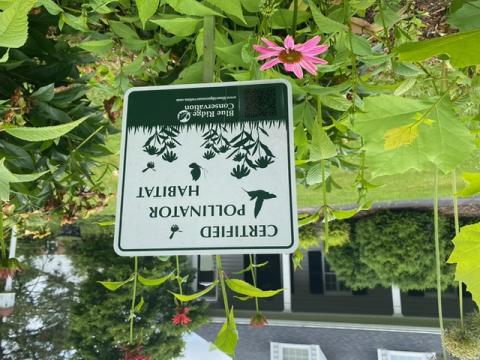Bee a Helper: Blue Ridge Conservation Celebrates National Pollinator Week
Written by Anna Dodge, James Madison University Summer 2024 Intern
Blue Ridge Conservation is a local nonprofit group geared towards conserving the natural beauty of our community. It was founded in 2019 by the Lynchburg Garden Club and the Hillside Garden Club after reading the book, Nature's Best Hope by Doug Tallamy.
This week the organization is celebrating National Pollinator Week by sharing how you can create your own Certified Pollinator Garden.
The first step to creating a Certified Pollinator Garden is to provide food for the pollinators. Pollinator food comes in the form of plants, shrubs, and trees that are native to our area. Some examples could be Dogwood Trees, Oak Trees, and various flowering plants. To ensure you are planting the correct type of plant, check out the completed list of Virginia Native Plants. Make sure you have four types of trees and shrubs and at least two types of perennial flowers from each season to ensure the best garden for the pollinators.
Next, supply water for our pollinator friends. “Like humans, bees and pollinators need water as well to survive,” said Bette Bibee, member of Blue Ridge Conservation. You can provide a birdbath or a butterfly area to your garden to ensure that this step is met.
After that, you should include a minimum of two pieces of shelter for the pollinators to build their nests in for the winter. Shelters include spaces of bare ground, rock piles, or spent summer garden debris left for spring clean-up. This ensures that the pollinators are safe and secure when winter comes.
“For years and years, they’ve been finding shelter on their own. The problem is we’ve just been cleaning it up in our gardens,” said Bibee.
Once that step is completed, you must vow to safeguard your new pollinator habitat. Invasive plants threaten pollinators by spreading without control and crowding our native plants, which is the food source for the local pollinators. You can help the native plants in your garden by not planting invasive species and removing any existing invasive plants. You must also safeguard against pesticide in your new garden because it can have adverse effects on pollinators. Instead of using pesticides, try the preferred method of Integrated Pest Management (IPM) to control pests in your garden.
Finally, you will pay your small application fee and submit your application to become a Certified Pollinator Garden. All your hard work will have finally paid off and you will be recognized as a Perfect Pollinator Pal, joining over 100 homeowners already certified across the Greater Lynchburg region.
The mission of the Blue Ridge Conservation is to educate and inspire people and their communities to become stewards of the natural world through direct action and collaboration.
To become more involved with Blue Ridge Conservation, check out their Bees in the Burg Summer Scavenger Hunt. This scavenger hunt takes place all over Downtown Lynchburg, where participants search for 9 bronzed bees hidden throughout the city. With each bee there is a barcode where you can learn more about nature and conservation.
To learn more about becoming a Certified Pollinator Garden, please visit the Blue Ridge Conservation Share Greater Lynchburg profile. To see our interview with Bette Bibee on The Mike Show, click here.



